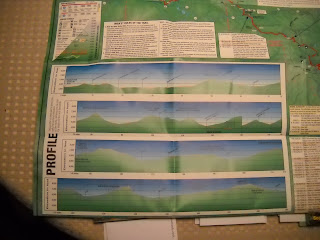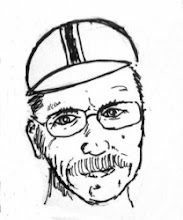
Long-time readers of this blog know that I manage to fund my adventures with a lot of
help from my friends. Even a frugal guy like me who races the
Divide on something less than a shoe-string budget manages to burn through a fair chunk of cash on an adventure like this. At a small town mini-mart in Wyoming, they don't take a blog post in exchange for a heat-lamp burrito but they do take cash. It's not a lot of cash per burrito, but it takes a lot of burritos to make it to Mexico. So, again, thanks to all my grass roots supporters. You people make these adventures possible.
And thanks again to my wife Christine and the people at
Bicycle Center for putting up with all my time on the trails, to Dirt Rag for deciding to print and pay for some of the words I write and to
SBS for a bike that proves it's toughness every day on every trail.
While this thank-you list is getting close to becoming as long as the Great Divide Mountain Bike Route and I have to add one more sponsor to my list:
Adrenaline Promotions.
A couple of weeks ago, John Ambrose of
Adrenaline Promotions called me up.He'd heard about the
Tour Divide, heard about me and he had a proposal. John explained that his company is quite small and they produce licensed collegiate jerseys. If I'd be willing to wear Adrenaline jerseys in the Tour, Adrenaline would provide me with the jerseys and a small cash contribution. Small by John's definition is big in terms of the number of burritos it will buy, but I only accept sponsorship from firms that make things I actually would use, like and trust. I told John that I'd go to his website, check things out and think things over.

John's plan was a good one. Adrenaline makes jerseys for Montana, Wyoming, Colorado and New Mexico. I'd wear the jersey of whatever state I was riding through. Depending on conditions I may be layering the jerseys with warmer layers and for part of the ride I'll be sporting the
Turtle Jersey given to me by my friend Dave Nice and the great people at Over The Edge Sports.
The jerseys looked good at the website and they are even better looking in person. Yes, I took John up on his kind offer. It was the Montana Grizzlies jersey that really sold me, I think that one is just stunning. All the jerseys are very nicely constructed with long 3/4 length zippers for cooling. I like things that pack small and I was happy to see that the jerseys can stuff down to a very light package about the size of a softball. The jerseys I'm not wearing will pack into a stuff sack to form my bivy pillow at night.

In racing, as in life, we are all just passing through, but we connect, however briefly, with where we are right now. I'm not a cowboy but each time I ride through Wyoming, I learn a bit more about the cowboy life. We both put in long days in the saddle.

In two months I'll be at the starting line in Banff, Alberta. There are at least a thousand things I have to figure out between now and then but I'll solve those problems and roll down that trail. Thanks to all my supporters, including
Adrenaline Promotions, at least I know I'll have something to wear and I won't starve.
Thanks for everything.
Keep 'em rolling,
Kent "Mountain Turtle" Peterson
Issaquah WA USA

 Shortly after I published my article What Long Distance Cyclists Really Eat, my pal Joe "That's Rando!" Platzner revealed something that he believes may be the ultimate randonneuring fuel: Trader Joe's Sesame Crepes.
Shortly after I published my article What Long Distance Cyclists Really Eat, my pal Joe "That's Rando!" Platzner revealed something that he believes may be the ultimate randonneuring fuel: Trader Joe's Sesame Crepes.
 The ingredient list is refreshingly brief. Certainly not a health food, but at least I can pronounce every ingredient. While I'm not a nutritional role model, I am trying to do my bit for the orangutans by avoiding products containing palm oil. I'd been looking for something to replace the palm oil rich Pay Day Bars in my diet and Trader Joe's Sesame Crepes fill that niche quite well.
The ingredient list is refreshingly brief. Certainly not a health food, but at least I can pronounce every ingredient. While I'm not a nutritional role model, I am trying to do my bit for the orangutans by avoiding products containing palm oil. I'd been looking for something to replace the palm oil rich Pay Day Bars in my diet and Trader Joe's Sesame Crepes fill that niche quite well.
















